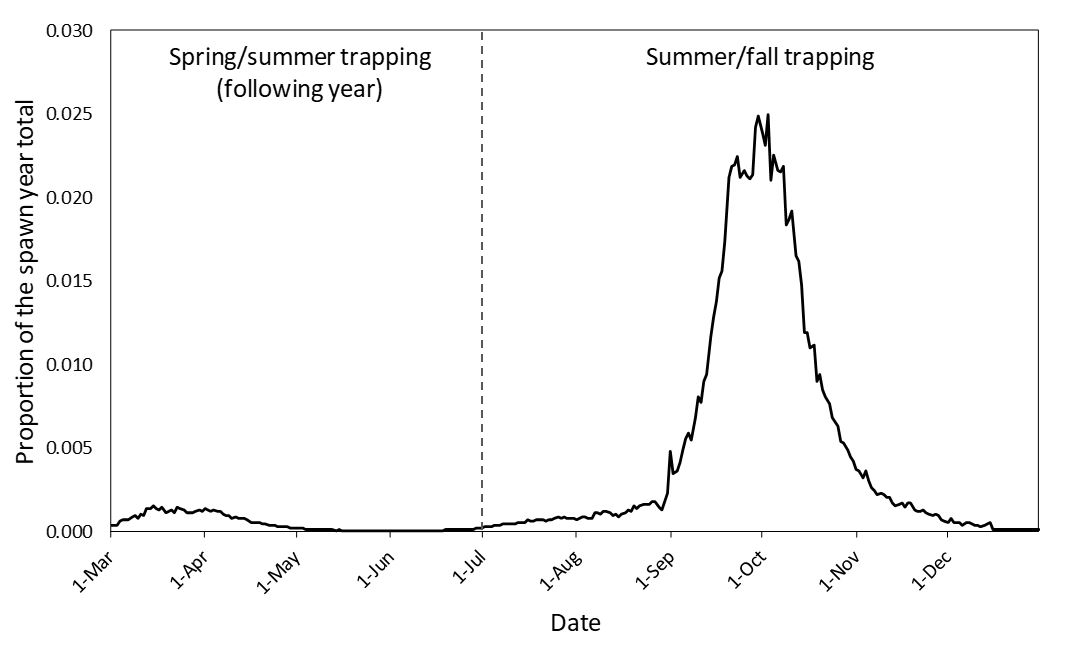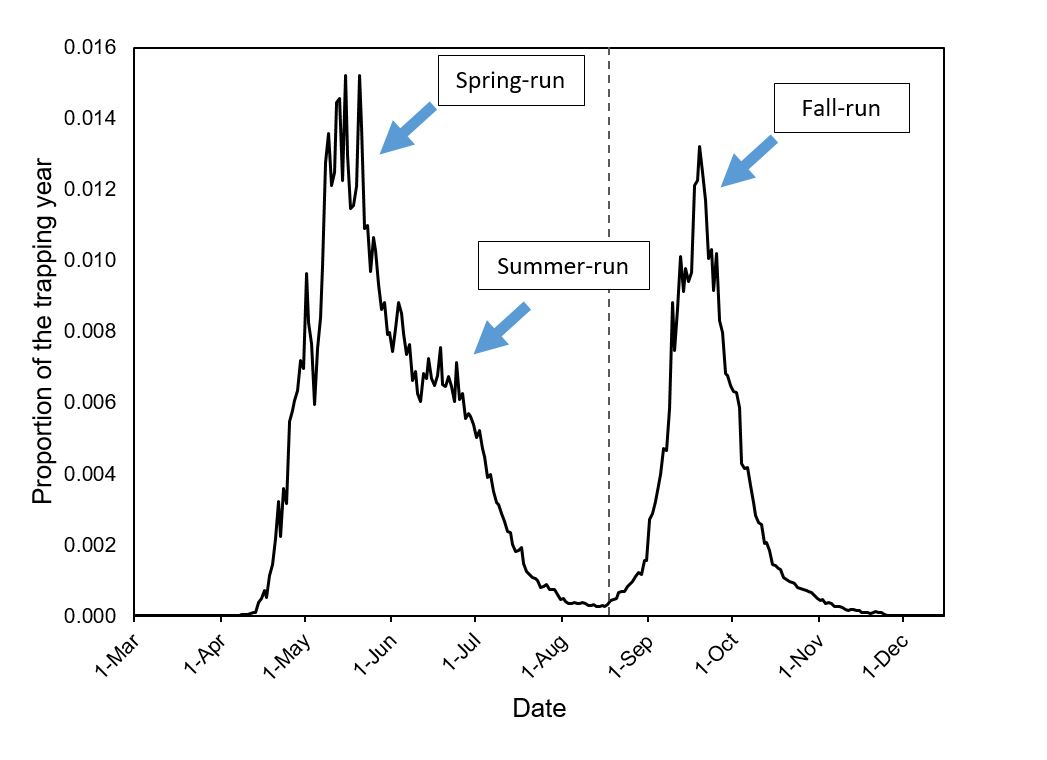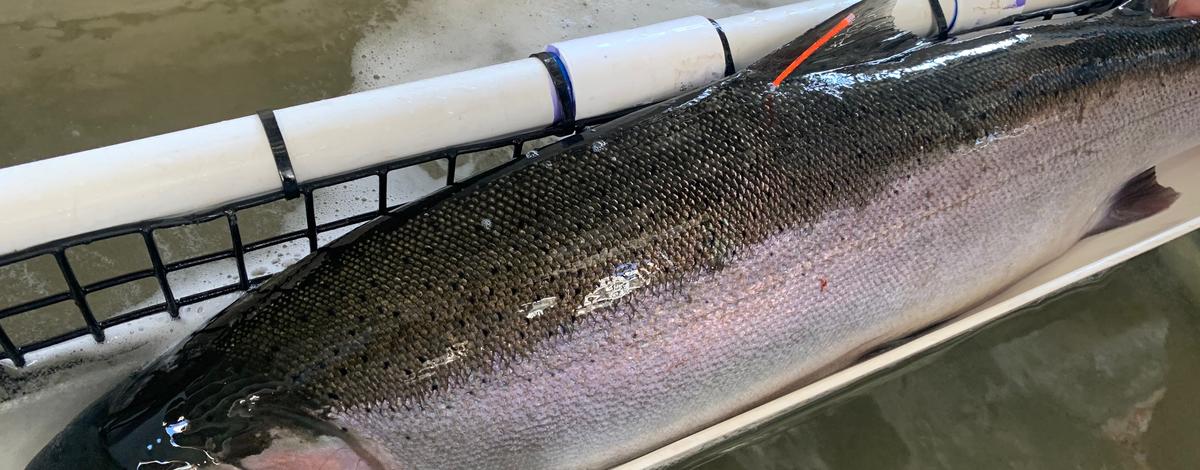Because of everything going on these days, IDFG's Lower Granite Dam sampling projects were suspended this spring. But, with some planning and coordination, our crew was able to return and resume adult salmon and steelhead trapping at the beginning of July. Summer-run steelhead which return to Idaho enter the Columbia River from the ocean from June through November and those early fish are just starting to show up at Lower Granite. These fish will stay in the larger rivers all winter and move into tributaries the following spring to spawn. Most Idaho steelhead will migrate past Lower Granite Dam in the fall but some will wait till spring to make the trip past Lower Granite Dam and into their spawning streams (Figure 1).

As for Chinook salmon, we are currently trapping and handling the tail end of the summer-run and also starting to see a few early fall-run Chinook. Although timing of these runs varies every year, Lower Granite Dam has set dates used to signify different runs of steelhead and Chinook Salmon. Steelhead that migrate past Lower Granite Dam starting July 1 are considered fish that will spawn next spring (Figure 1). Spring-run Chinook start appearing at Lower Granite Dam in early or mid April and peak in mid May. Summer-run Chinook lag a little behind and overlap with springers. There are far fewer summer-run Chinook and they peak at Lower Granite Dam in mid June. Chinook Salmon that migrate past Lower Granite Dam starting August 18 are considered fall-run Chinook Salmon and peak in towards late September (Figure 2). We should start seeing more fall-run Chinook Salmon and steelhead show up in the next couple of months.

Additionally, we have been t-bar tagging steelhead for the catch-and-release graduate study . Steelhead are starting to move into the Clearwater River so if you are eager to get out on the water and lucky to hook one, keep your eye out for tags along their dorsal fins. Stay tuned in the next few weeks for information that summarizes preliminary findings of this study.


